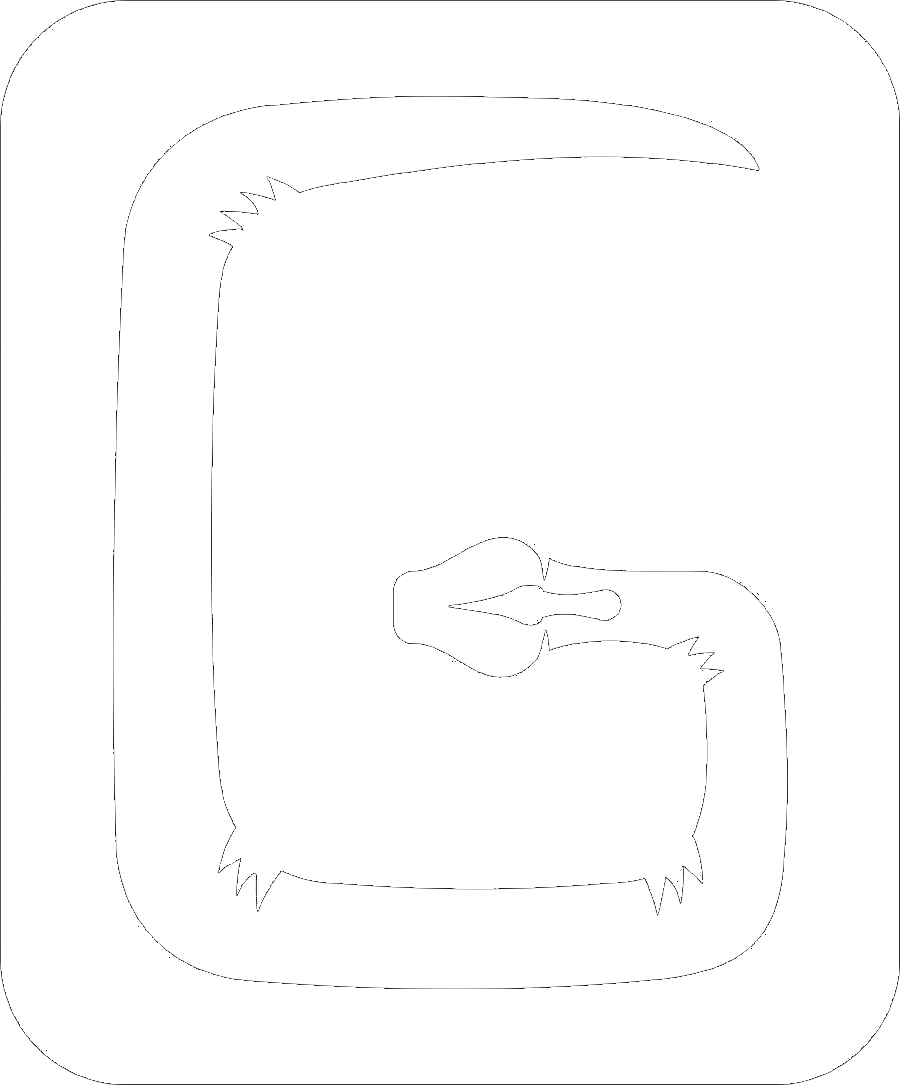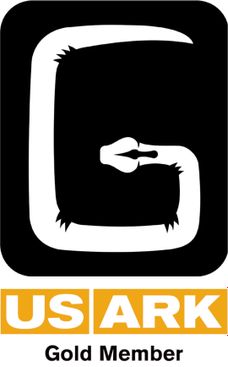Boa Constrictor Care
This care sheet is a basic guideline for keeping Boa constrictor imperator (BCI), AKA Boa imperator, and is designed for beginners to the world of boa constrictors. Any of the BCI localities can be kept under the following conditions; however, some require and prefer a few adjustments. Gather all information possible before buying a boa and be sure you are committed to owning an animal that may live more than twenty years and reach an adult size in excess of ten feet (very rare for Colombian boas and impossible for most Central American boas) with a potential weight of sixty pounds or greater (again, rare). The guidelines below also apply to other Boa constrictor subspecies, but consult a specific care sheet or breeder for their individual needs. Feel free to contact Goss Reptiles with any questions. We have experience and knowledge of most localities and subspecies of Boa constrictor, as well as other boas.
Scientific name: Boa constrictor
Natural habitat: Central America and northern South America (see BOA TAXONOMY page)
Adult size: 3'-10' (subspecies/locality dependent)
Life span: 20+ years
Reptile keeping experience: moderate
Below are the basics for keeping boa constrictors.
Caging: Many caging options are available such as high-density plastic/PVC cages and custom enclosures. Aquariums can be used, but aquariums are designed for fish, not snakes. Boas should be kept in enclosures designed for boas. Specialty plastic cages have been developed in recent years. They are made from high-quality plastics that keep proper humidity and are much more suitable for boas than anything else. Custom enclosures, such as many of the plastic caging systems on the market, are also available. You can order specific sizes, colors, heating options, etc. Some companies build large, furniture quality cages that can be great additions to your home living area. Researching boa caging can lead to ideas for your own, homemade cage, but I suggest beginning with enclosures from a company that specializes in reptile caging. Do a quick search on any internet search engine and you will find multiple companies that specialize in boa cages and racks.
Young boas have simple needs. A large, beautifully decorated cage is very nice… for us. Many young boas will not appreciate such lavish surroundings. While a new boa is acclimating, simple housing is preferred. The enclosure should be prepared prior to arrival. An appropriate first cage for a neonate boa should be no larger than 30”L x 12”W. Most breeders use plastic containers (14"L X 8"W X 4"H or larger) to house babies in systems called racks. The babies feel very secure and thrive in these conditions. As a boa grows, a larger cage is obviously required. Snakes of the genus Boa are primarily terrestrial and floor space is more important than height. While young boas may climb, as they grow they will climb much less. Adult boas should be housed in cages no smaller than 4’L x 2’W. Larger boas appreciate more room.
Boas control their body temperature through thermoregulation. The cage should have a warm side and a cool side. This is very important! Do not place the heat source in the center of the cage. Place it at one end of the cage. If the boa gets too warm, he will move to the cool side. If he is too cool, he will move to the warm side. This is a simple definition of thermoregulation.
A hide box/shelter will be appreciated by your new addition. A hide allows the boa to feel safe and secure. Several companies offer hides/hide boxes. You can find them at your local pet shop, online, or at a reptile show. Two hides, one on the warm side and one on the cool side, are ideal. A stressed boa may stay on one side of the cage if only one hide is provided. This may discourage him from thermoregulating.
Temperature/Lighting: The temperatures in a boa cage should not drop below 78◦ F on the cool side. The warm side of the enclosure should be 85◦ F with a hot spot of 90◦ F. The best presentation for a hot spot is “belly heat” (heat from under the snake). This can be accomplished using various equipment. Under tank heaters (UTH's) are the most readily available. Heat cable and heat tape are other possibilities. I recommend controlling any heating device with a proportional thermostat or rheostat. Some heat sources (especially heat tape) get too hot for most enclosures and must be controlled for the safety of the boa, as well as you and your family. If using these devices, especially on glass, be sure some ventilation is provided around the heat source. If heat builds up, it can bust the bottom of a glass tank or could cause other caging materials to melt or overheat and possibly cause a fire. Heat from above is not necessary if belly heat is provided. If a basking bulb is used, it should be placed directly over the belly heat and be sure to check the temperature of your hot spot while the bulb is on. A low wattage fluorescent bulb can be used to provide a photoperiod (day/night cycle). This light will also allow you to better observe your boa. Full spectrum bulbs with UVB may provide physical and physiological benefits for boas. Most boa keepers do not use UVB lighting, but you may provide it.
Water: A water bowl is a necessity. This allows your boa a place to drink and helps provide the proper humidity for your boa. The humidity in the cage should be 60%-70%. A hygrometer will give you this measurement. The water must always be clean and should be changed regularly. Some boas will defecate or urinate in the water. The water must be cleaned immediately if this occurs. Be sure to scrub and rinse the bowl. Use an anti-bacterial dish soap and hot water to clean water bowls. Be sure to rinse thoroughly. Run the bowl through a dishwasher (not the one in your kitchen) monthly, if possible. Young boas will often soak before or during a shed cycle. This aids them in shedding their skin, but occurs only when proper cage humidity is not being met. A boa who is constantly in the water usually suggests the humidity is too low, the temperature is too high, or the boa has mites.
After a shed, be sure to check the tip of the boa’s tail. Young boas will sometimes retain a small piece of shed there. If caught soon after shed, this old skin is easy to remove. You may simply be able to pull the skin off. Always be careful when attempting this, but it is not a major process. Usually a simple dip in warm water will provide sufficient assistance. This skin retention does not necessarily mean you have husbandry issues. Sometimes the skin simply tears before the shed is removed completely. If you notice retained skin on other areas of the boa, you may need to adjust your boa’s environment. Shedding issues are usually a result of insufficient humidity. A soak or two during the shed cycle will greatly help if you are experiencing low humidity issues. Place the boa in a plastic container with a secure lid. Place ¼” of warm water in the container and place it on the cool side of the cage. This will keep the water warm and the humidity high. A couple holes in the lid or sides of the container will provide ventilation. If using this method at the end of a shed cycle, place a small towel in the container. The boa can rub on this and it will help him shed his skin. You can soak your boa for up to an hour (two hours if combating a tough shed) and can repeat as necessary. Be sure to check on him regularly as they will often defecate while soaking. The water should be changed and the container cleaned if this occurs.
Substrate- Boas can be kept on several types of substrate. Aspen, cypress, fir, white or brown butcher/wrapping paper, and cage carpet are the most often used substrates. When using aspen or carpet, the cage can be spot cleaned often, with a full change occurring as needed. If using paper, the entire substrate is changed each time cage cleaning occurs. Do not use cedar chips as substrate for any reptiles.
Diet/Feeding: It is very important to allow your new boa to acclimate to his new surroundings before feeding. Never attempt to feed a new boa for at least seven days after he arrives. I assure you he will be fine without food during this time. If you feed him too soon and he is still stressed from the move, he may regurgitate. If this occurs, be sure the husbandry is optimal and do not attempt to feed him again for three weeks. The most common cause of regurgitation is temperature. Be sure your cage temperatures are not too low. Never feed your boa a meal that is larger in girth than the mid-body girth of your boa. In other words, your boa should never have a bulge after eating. Especially in young boas, a meal that is too large may lead to regurgitation. Boas in captivity should be fed only quality rodents (mice or rats) and need no other food or supplementation. Be sure you buy your rodents from a good source to prevent disease and mites.
Boas two years old and younger should be fed one appropriately sized food item every 7-14 days. Do not feed them more often. Excessive feeding may lead to regurgitation, improper growth, and even premature death. Once boas near adulthood, they will thrive while being fed every 14 days. Some boa keepers feed adults 1-2 times each month and the boas are perfectly healthy. As long as your boa is muscular, healthy, and not thin, your feeding regimen is fine. Boas in the wild do not have someone delivering food once every week so do not feel that "once a week" is a rule. I do not personally feed any sub-adult/adult boas once a week.
Most boas available will be eating frozen/thawed prey. If you purchase a boa that is eating live, they will often take frozen/thawed prey that is presented from a pair of tongs. Pre-killed prey is always best, whether it is frozen/thawed or freshly killed. Live prey may harm your boa. If the boa does not kill the prey, the rodent may bite the boa. Even if the boa does constrict the prey, the rodent may bite before it is killed.
© Copyright. All rights reserved. Content from this site may not be used without written consent from Phil Goss. Logo enhanced by Dozier Studio.
We need your consent to load the translations
We use a third-party service to translate the website content that may collect data about your activity. Please review the details in the privacy policy and accept the service to view the translations.

